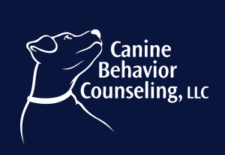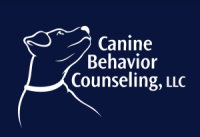Was your first baby your dog? Mine was. In fact, I had two small mix breeds when I brought home my first of 3 babies! I want to give you some important advice and offer you some practical training that will help your dog love your new bundle of joy!
Desensitization and training your dog can certainly help ease the transition of having a new, noisy bundle of joy in the home, but nothing is more important than safety. We know that most dog bites are directed at children. Why? The main reason is that dogs tend to be guarders, even the most wonderful dog can decide to guard food or a toy from a child. The second most common reason is fear. If a dog has never been socialized with children, they can be quite scary! The third most common is rough play or accidental bites. For these reasons, I do not recommend ever leaving a child under the age of 9 or 10 alone with a dog.
Here are a few tips I think you will find helpful in helping your dogs adjust to your new baby!
Positive Association/Desensitization:
Purchase or borrow a baby doll, one that cries, giggles or talks is best. Wrap it up and pretend you are holding, burping and cuddling your baby. When the dog comes to sniff, praise them while quickly setting boundaries. Ask for a sit and then reward! If you have two dogs, only allow one dog at a time to investigate the new doll, stroller, basinet, diaper bag, etc. If you like to use a clicker in training, then you would click and treat when the dog sniffs any new object providing the dog with positive feedback. A dog that gets punished every time he approaches the new baby will soon learn that the baby = punishment, I do not like the baby, grrrrr. Remember, the goal is that whenever the dogs are near the baby, great things happen with boundaries in place!
If you get frustrated every time your baby cries, the dogs will associate stress with the sounds the baby makes which will cause the dog to be nervous/anxious. If the baby makes a crying sound as it approaches your pup, can he become reactive to the baby? People always say “there was no warning or reason for the dog bite.” There is always a reason, we just miss our dogs signals. Practicing “calm energy” will not only be good for your dog, it will be great for you!
Give your Dog Feedback/Set Boundaries:
Practice putting the baby doll in a stroller and walking the dogs with the pretend baby so they get use to keeping their toes out of the way, the sounds it makes and wide turns. Practice having the dogs sit often especially when you see another dog, this is best done behind the stroller, just in case they dash toward a dog, you want your leashes to be behind the stroller so they won’t risk knocking your stroller over.
Practice laying the pretend baby on the floor on his/her blanket. Teach the dog that the blanket is not to be stepped on. How? Put a leash on your dog and practice walking past the blanket, say “off” if your pup starts to walk on the blanket. When he begins to avoid stepping on the blanket, reward! After several repetitions of rewarding the dog for good behavior, practice with the dog off leash. Do this in several rooms of the house, even on the deck or yard. Once your dog learns the rules and gets rewarded for it, he will be happy to comply. (For more information on this topic, read my blog titled “When Your Pup Asks Why”.)
What boundaries will you set around the highchair? What if at 6 months your baby starts to eat solid foods from the high chair, and some gets on the floor. Now your baby is 12 months old and is a messy eater! For 6 months Max your sweet Labrador has been rewarded for sitting nicely by the highchair, hey, he cleans up the floor, who would complain? What if at 14 months Mom says “stop feeding the dog, please keep your food on your tray”. Your child’s arm often dangles over the side, but no more food is randomly dropped. Max is use to being rewarded, Max gets excited and jumps up to take the food, but bites through your child’s hand on accident. Is Max a bad dog? Could this have been prevented? Absolutely.
Appropriate Play/Accidental:Teaching your dog the rules of play are essential, such as “take it” and “drop it”. If you allow your dog to jump up and steal the tug toy from you, then expect him to do the same to your toddler. Teaching him to only take toys or food on cue, will prevent him from taking things from your child’s hands. If you allow your dog to jump up then sit, he will again do this same behavior with children. Teach him to come, sit and reward!
The Anxious/Fearful dog:Finally, keep your dog in a safe place if he is fearful of children. Many dogs come into rescue with a fear of children. Slowly letting them gain confidence at a distance is key to building his positive association. Having a toddler or child toss food to a nervous dog will help, the key is to take this SLOW and always just toss, do not attempt hand feeding for weeks. Make sure your anxious dog never feels confined with a scary child in the room, this is a recipe for disaster. Confinement can be on a leash, trapped in a crate, in a room, a car, small back yard, a hug (most dogs hate hugs anyway, please never let your child hum your dog). The bottom line is make your dog feel safe if he is anxious around kids until you work with a trainer to desensitize him.
I hope you understand how many dog bites can be prevented if we only pay attention to what we are teaching and rewarding our dogs for. So be an aware dog owner and keep both your child and dog safe!

